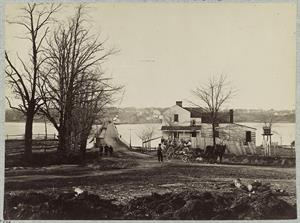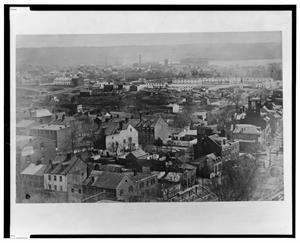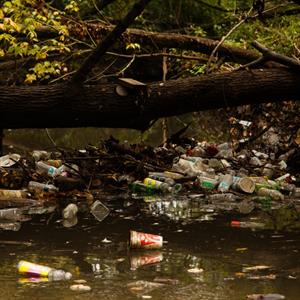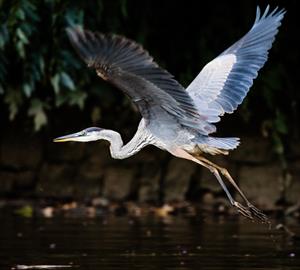By Heather Black, IWLA Chesapeake Conservation Corps volunteer
As I fought the wind, a great blue heron flew effortlessly above, a creature totally in its element. We gave up our struggle and watched as the bird landed about 100 feet away. It stood on the shore of the river among the exposed root balls and long forgotten basketball and soda bottles. The juxtaposition was not lost on me – the graceful outline of the bird standing next to the man-made items that did not belong.
This is the Anacostia River – a river that runs through a portion of our nation’s capital. It might seem small and insignificant at just 8.5 miles long, but every river plays a vital role both in our history and our present day.
The U.S. Environmental Protection Agency estimates that less than 10 percent of the original forests and wetlands in the Anacostia River’s watershed remain, with more than 25 percent of the surface now covered in asphalt, concrete, and other impervious surfaces. This growth of impervious surfaces can lead to erosion of streambanks (due to fast-flowing water that has nowhere to go) and an increased amount of trash and debris entering the waterways.

How We Got Here
For most of our history, the Anacostia River was surrounded by forests. It ran narrow and fast along its upper reaches and wide and slow throughout the tidal parts. The land surrounding the river was prime habitat for a plethora of species, while the river itself provided a home for fish, shellfish, and wading birds. However, as the human population around it increased and the land use began to change, the diversity of species began to decline. As early as the 1600s, agriculture began to take its toll on this river as forests were replaced by corn and tobacco plantations. With deforestation came one of the first sources of pollution to the river: sedimentation.

The very structure of the riverbed started to change. With the decrease in forested land surrounding the Anacostia and the increase in runoff, the river started to become clogged. Over time, the continuous erosion of the streambanks led the Army Corps of Engineers to build an artificial seawall along parts of the river and start dredging some of the sediment. Eventually sedimentation caused parts of the Anacostia’s width to shrink to only a few feet across, leading to the closure of the river to water commerce. By the mid-1800s, the population of Washington, DC, had grown to the point that waste had nowhere to go but into the river, leading to further pollution problems.
This story describes the history of a lot of the rivers that flow throughout the United States. Rivers were a source of water, habitat, and transportation during our country’s beginnings, but expanding populations and land use decisions caused harmed. But that was in the past, and times are beginning to change.
 The Future of Forgotten Rivers
The Future of Forgotten Rivers
The forgotten rivers of our country are being rediscovered, and the communities they flow through are working to return them to their former glory. For the Anacostia, there have been significant steps, including the development of Kenilworth Aquatic Gardens in the early 1900s, the creation of the Anacostia Riverkeeper, the Anacostia Waterfront Trust, and regulations targeting the top source of the pollution in the river today: trash.
The Anacostia River Cleanup and Protection Act, better known as the “bag law,” has helped reduce the main source of litter by almost 75 percent since it was enacted back in 2009. Businesses that sell food or alcohol charge a $0.05 fee for each paper and plastic bag distributed with any purchase, and the revenues are used to implement educational, trash capture, stream restoration projects throughout the Anacostia River watershed. Developers in DC are also starting to think green when it comes to building projects, focusing on green, living roofs and runoff control systems.
 The Anacostia stills needs help. There are still parts of the river plagued with trash, erosion, and sedimentation, but it is an improvement from the past. Wildlife is beginning to return to the river. Great blue herons and bald eagles can be seen flying above the river and making their home in the watershed. It seems like very soon the Anacostia will no longer be referred to as the forgotten river but will stand in its rightful place with our nation’s capital.
The Anacostia stills needs help. There are still parts of the river plagued with trash, erosion, and sedimentation, but it is an improvement from the past. Wildlife is beginning to return to the river. Great blue herons and bald eagles can be seen flying above the river and making their home in the watershed. It seems like very soon the Anacostia will no longer be referred to as the forgotten river but will stand in its rightful place with our nation’s capital.
If you would like to become involved in stream cleanups or water quality monitoring, please join the Clean Water Challenge today.